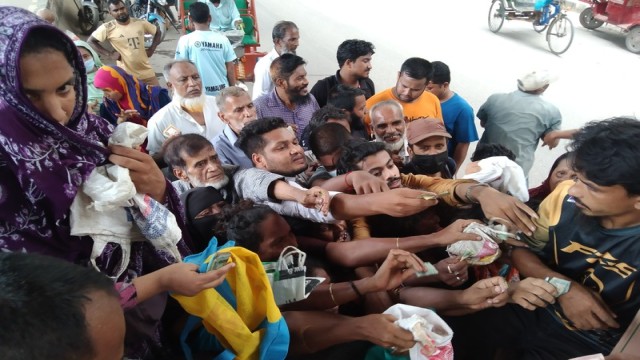
Photo: Voice7 News
Low-income residents collect essential food items from a TCB truck in the Khilgaon area of the capital, as part of the government's subsidized sales program aimed at easing the burden of rising living costs. Photo: AH Mintu/V7N
Dhaka, August 10 (V7N) – The Trading Corporation of Bangladesh (TCB) has announced that this month’s subsidized product sales will not be limited to low-income families with smart cards. For the first time, general consumers without cards will also be able to purchase essential items directly from designated TCB trucks by standing in queues.
This extended truck sale operation will be conducted in Dhaka, Chattogram, Gazipur, Cumilla city areas, and several other districts. In Dhaka Metropolitan Area, the operation will run for 30 days (excluding Fridays) until September 13 through 60 mobile trucks. Other cities and districts will have similar operations from today through August 31, also excluding Fridays.
The number of mobile trucks allocated for the program in various locations are:
Chattogram: 25 trucks, Gazipur: 6 trucks. Cumilla City: 3 trucks, Dhaka District (outside metropolitan area): 8 trucks, Cumilla District (outside city): 12 trucks, Faridpur: 4 trucks, Patuakhali: 5 trucks, Bagerhat: 5 trucks.
Consumers will be able to buy:
Soybean oil at Tk 115 per liter (maximum 2 liters)
Lentils at Tk 70 per kg (maximum 2 kg)
Sugar at Tk 80 per kg (maximum 1 kg)
This sets the maximum purchase amount per consumer at Tk 265.
According to TCB, each truck will have sufficient stock to serve approximately 500 consumers daily. Alongside this public sales initiative, the regular sales for smart card holders will continue nationwide. To date, around 6.5 million smart cards have been distributed, of which 5.4 million are currently active. TCB’s long-term target is to bring 10 million families under the smart card program to ensure access to subsidized daily essentials.
This initiative comes amid rising commodity prices and is part of a broader government effort to ease the financial burden on both low-income and middle-income households.
END/AHM/SMA/
.jpg)

.jpg)
Comment: